
Members of the Comanche Code Talkers pose for a photo during World War II. American Indians from at least sixteen different tribes served as code talkers in the Army, Navy and Marines in both the European and Pacific theaters during the World War II. U.S. Army photo courtesy the National Museum of the American Indian

During World War I, members of the Choctaw Nation served as some of the first Native American code talkers in military service. When the 142nd Infantry Regiment sustained heavy loss in early 1919, Army Col. A.W. Bloor asked Choctaw service members in his command to utilize ancestral language to prevent the enemy from further intercepting the regiment’s sensitive radio communications. As a result, the regiment was able to execute a complex withdrawal without further mishap and without German interference. U.S. Mint coin courtesy the National Archives and Records Administration

Navajo Code Talkers Marine Corps Cpl. Henry Bake, Jr. and Pfc. George H. Kirk use a portable radio near enemy lines to communicate with fellow Marines in December 1943. The Navajo language proved to be an unbreakable military code that assisted Navy and Marine operations in the Pacific during World War II. The secret of the Navajo Code Talkers and the use of the Navajo language would not be revealed until the late 1960s. National Archives and Records Administration photo
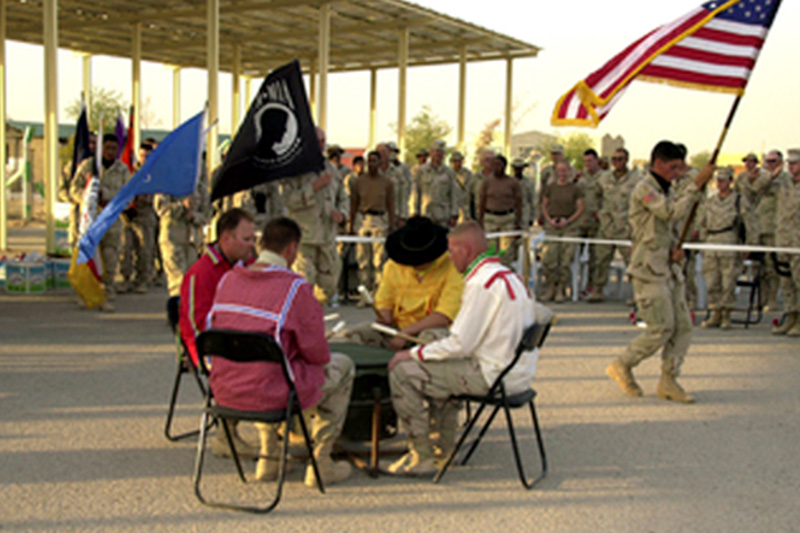
Participants form a drum circle during a pow wow organized by Army Sgt. Debra Mooney, a member of the Choctaw Nation, and the 120th Engineer Combat Battalion at the Al Taqaddum Air Base near Fallujah in 2004. The two-day event featured Native American dancing, singing and traditional games and foods, including fry bread. Participants made their pow wow drum from a discarded 55-gallon oil barrel and canvas from a cot. Photo by U.S. Army Master Sgt. Chuck Boers courtesy the National Museum of the American Indian
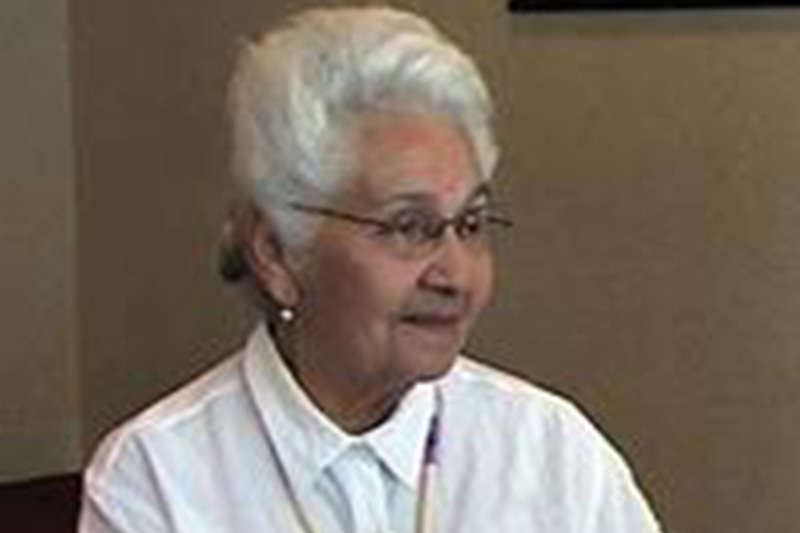
Army nurse Marcella Le Beau of South Dakota joined the Army Nurse Corps in 1943, when the U.S. military needed volunteers. During her service, Le Beau saw some of the worst fighting of the war including serving in hospitals in Normandy, France and Belgium on the eve of the Battle of the Bulge. Reflecting on her time as an Army nurse, Le Beau said that she never encountered discrimination on account of her American Indian heritage. She said when her medical colleagues discovered she was the great-granddaughter of a chief, they assumed she was "an Indian princess." Library of Congress photo
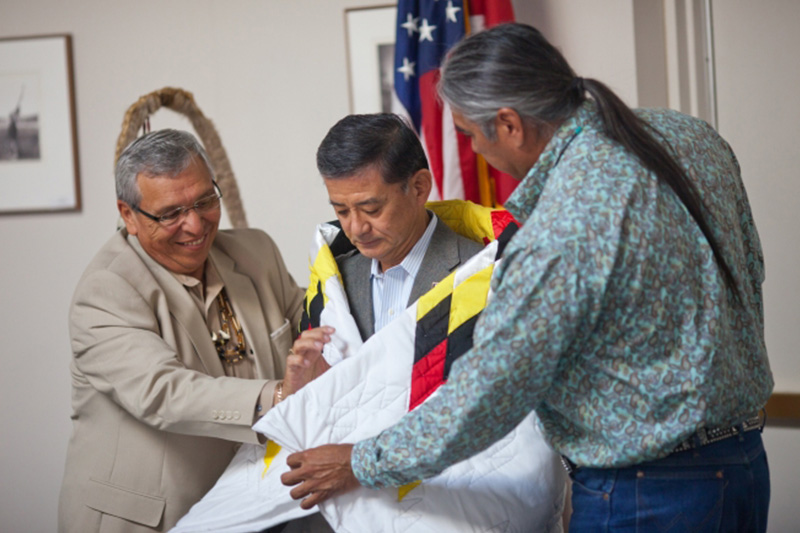
Former Veterans Affairs Secretary Eric Shinseki receives a star quilt from Charles Murphy, Standing Rock Sioux Tribe Tribal chairman, and Tex G. Hall, Mandan, Hidatsa and Arikara Nation chairman, in Bismarck, N.D., July 5, 2011. The star on the quilt is symbolic of the traditional importance of the stars to Plains Indian culture and the use of colorful fabric signifies the high regard of the presenter for the recipient. The Department of Veterans Affairs works closely with tribal governments to provide services for the thousands of American Indian and Native Alaskan veterans. White House photo by Lawrence Jackson
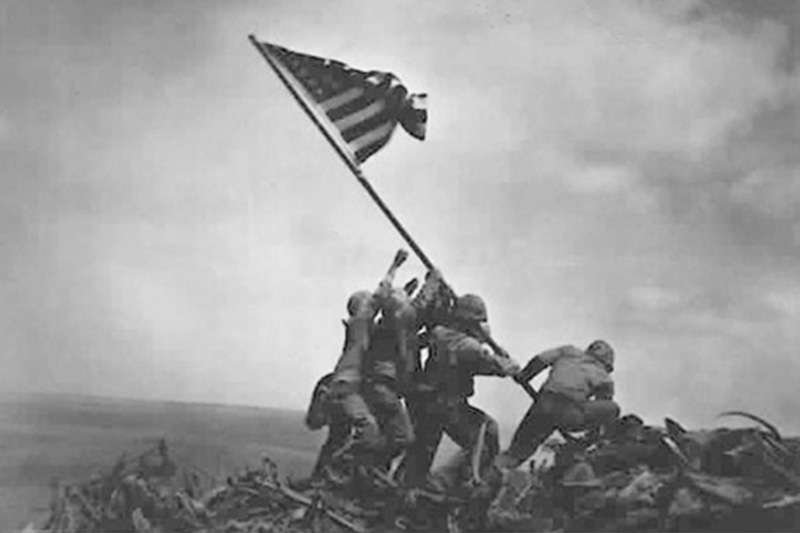
U.S. Marine Corps Pfc. Ira Hayes, left, a Pima from Arizona, helped four fellow Marines and a Navy corpsman raise the second flag on Mount Suribachi, Japan, Feb. 23, 1945. The service members are from left to right:, a member of the Pima Nation of Arizona, Franklin Sousley, Michael Strank (behind Sousley), John Bradley, Rene Gagnon (behind Bradley) and Harlon Block. National Archives photo
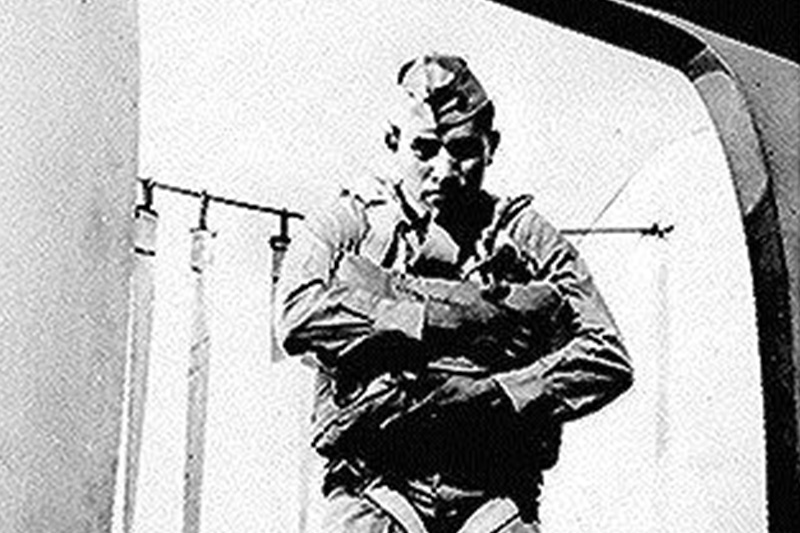
Marine Corps Pfc. Ira H. Hayes, a Pima from Arizona, poses for a photograph at age 19 at Marine Corps Paratroop School in 1943. In 1945, Hayes helped raise the second flag on Mount Suribachi, Japan. U.S. Marine Corps photo

Marine Corps Reservists Minnie Spotted Wolf, Blackfoot, Celia Mix, Potawatomi, and Viola Eastman, Chippewa, pose on Camp Lejeune, N.C. in October 1943. U.S. Marine Corps photo courtesy the National Archives and Records Administration

Army Cpl. Mitchell Red Cloud, Jr., Ho-Chunk Nation of Wisconsin, posthumously received the Medal of Honor for conspicuous bravery during an enemy action in the Korean War. Red Cloud was the first see to a large number of Chinese soldiers approaching his company command post. Despite his proximity to the enemy, Red Cloud fired at the advancing enemy, giving his company time to consolidate defenses. Even after he was seriously wounded Red Cloud continued to fire upon the enemy, supporting himself against the trunk of a tree until he received a fatal wound. Department of Veterans Affairs photo
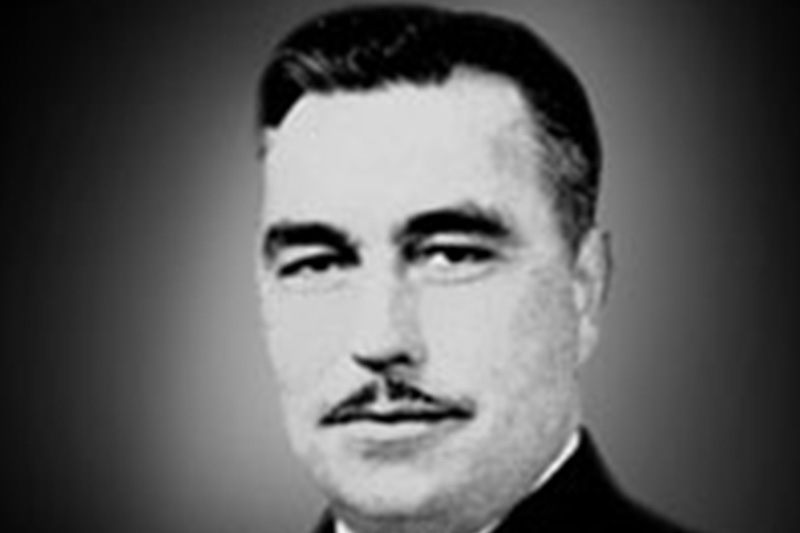
Navy Cmdr. Ernest Edward Evens, Cherokee and Creek, received the Medal of Honor for his bravery and leadership during the naval Battle of Samar in October 1944. Evens was the commanding officer of the USS Johnson when it encountered a larger Japanese enemy task force. The Johnson sustained heavy enemy fire that caused a loss of engine power and hampered communications, but Evens continued to lead his ship and his men into the battle, inflicting significant damage on Japanese ships despite sustaining serious wounds himself. Department of Veterans Affairs photo

Army 1st Lt. Jack C. Montgomery, Cherokee, received the Medal of Honor for his bravery in Italy during World War II. In February 1944, Montgomery exposed himself to enemy fire to protect his platoon from an encroaching enemy. He proceeded to attack a machinegun position which resulted in enemy surrender and the silencing of the machineguns. By the end of the action, Montgomery had killed eleven enemy soldiers, captured thirty-two prisoners, and wounded an unknown number of enemy infantry. Department of Veterans Affairs photo

Army Pfc. John Reese, Cherokee, was posthumously awarded the Medal of Honor on Oct. 19, 1945, for heroic actions in the Philippines during World War II. Reese and a fellow soldier separated from their platoon and held off over one hundred approaching Japanese at the Paco Railroad Station. At times, Reese purposely drew enemy fire on himself to provide his comrade with the opportunity to fire unobstructed. Reese was killed while attempting to return to the American line when he ran out of ammunition. Department of Veterans Affairs photo
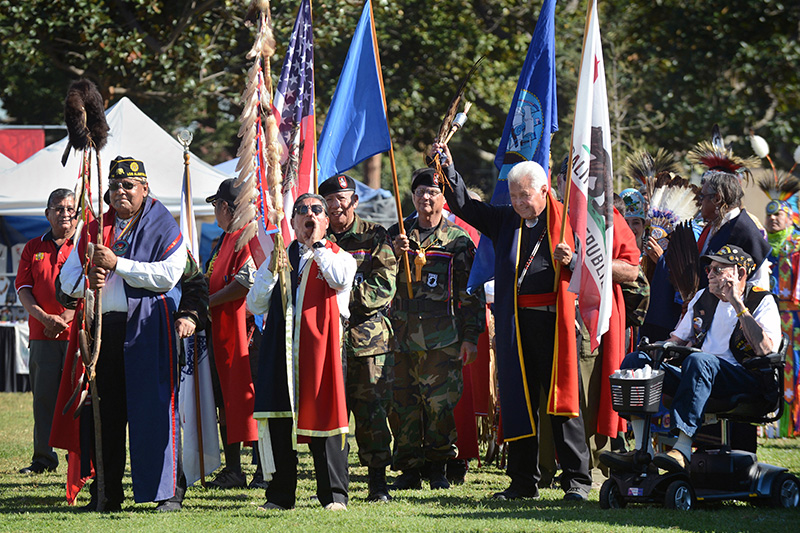
Native American veterans celebrate their heritage and military service during the Grand Entry ceremony at the Native American Veterans Association's annual Veteran's Appreciation and Heritage Day Pow Wow in South Gate, Calif., Nov. 8, 2014. More than 4,000 people represented their tribes and respective military service branches with intertribal music, dancing, arts and crafts and storytelling during the two-day event. DoD photo by Marvin Lynchard
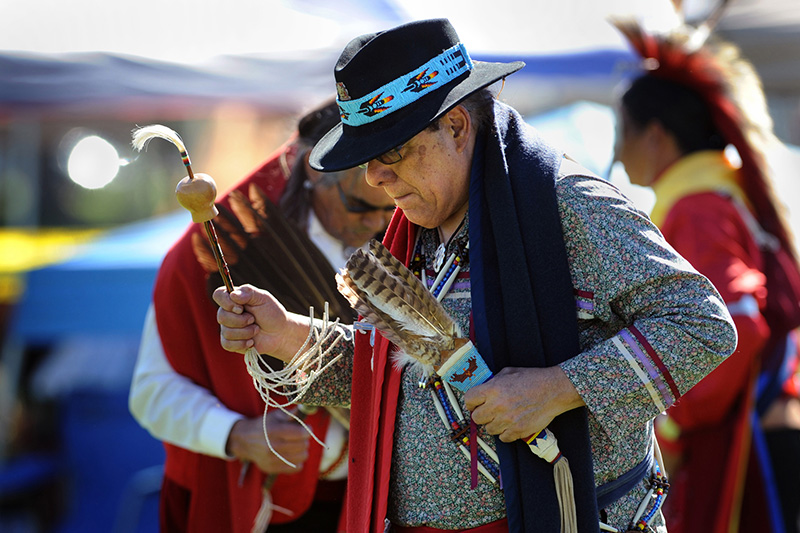
Ted Tenorio, Native American Veteran’s Association President and Army Vietnam veteran, dances during the gourd dance portion of the Native American Veterans Association's annual Veteran's Appreciation and Heritage Day Pow Wow in South Gate, Calif., Nov. 8, 2014. Tenorio, from the Tigua tribe, was adopted from the Blood tribe years ago. DoD photo by Marvin Lynchard
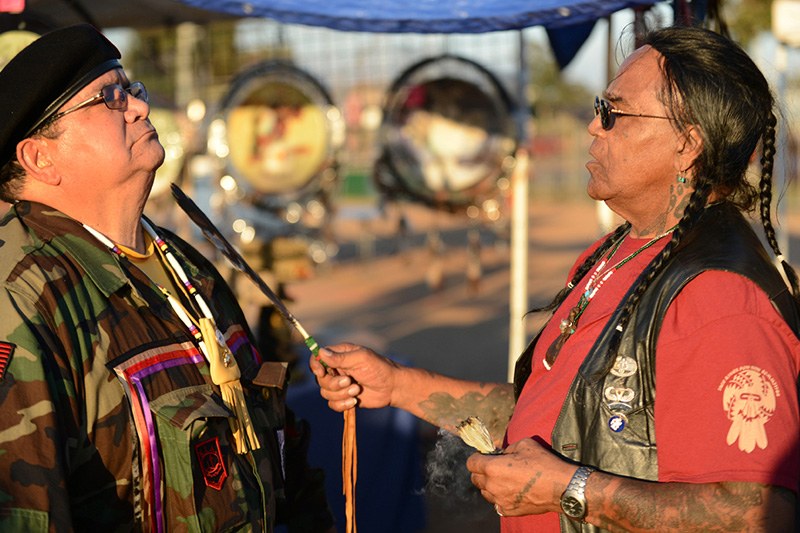
Marine Corps veteran Antonio Quezada receives a spiritual cleansing and prayer from Native American Veterans Association's spiritual adviser Tony LittleHawk, an Army Vietnam veteran, during the Native American Veterans Association's annual Veteran's Appreciation and Heritage Day Pow Wow in South Gate, Calif., Nov. 8, 2014. Quezada is from the White Mountain Apache tribe and LittleHawk is from the Cherokee tribe. DoD photo by Marvin Lynchard
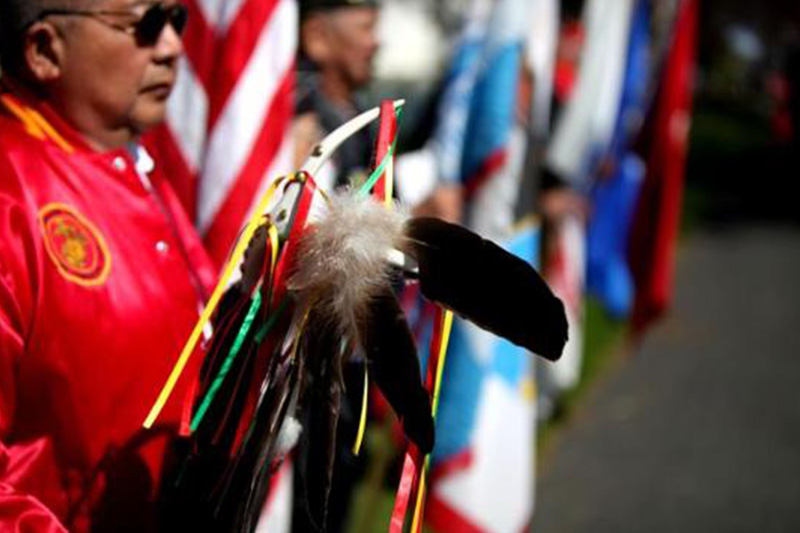
A Marine Corps veteran holds an eagle staff, the traditional sign of the Native American Yakama Nation, during the funeral for U.S. Marine Corps Lance Cpl. Joe Jackson at Tahoma Cemetery in Yakima, Wash., May 4, 2011. Jackson was killed in action in Afghanistan April 24, 2011. Marine Corps photo
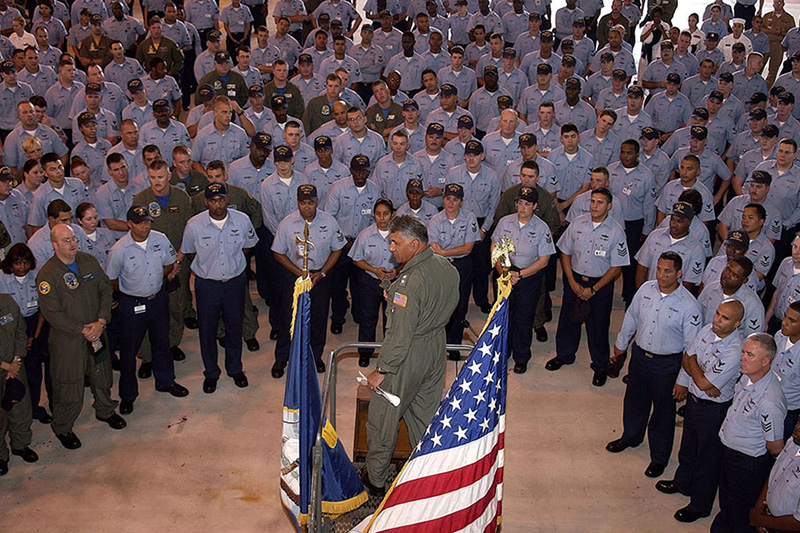
Navy Rear Adm. Michael L. Holmes, a North Carolina Lumbee, delivers a speech in a hangar at Naval Air Station Jacksonville. At the time of his retirement in 2005, Holmes was the highest ranking Native American in the military. Naval History and Heritage Command photo
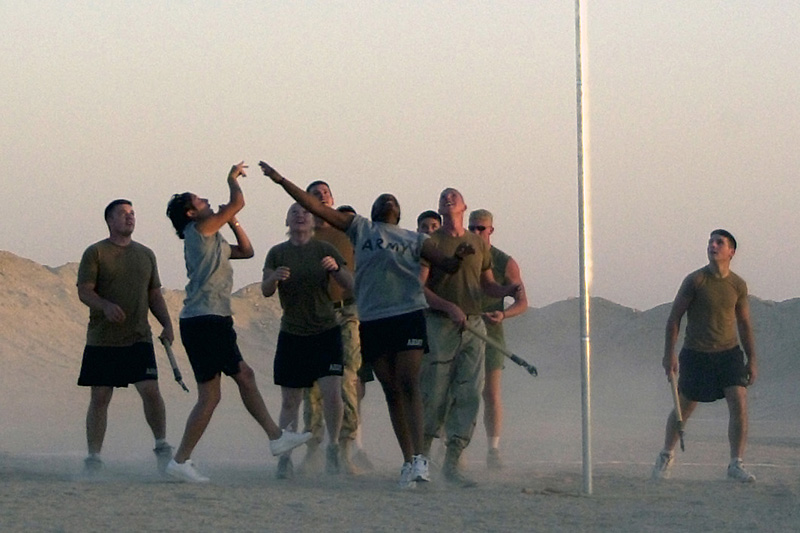
U.S. soldiers of Native American heritage play stick ball during the Native American Inter-Tribal Pow Wow held at Al Taqaddum, Iraq, September 2004. U.S. Army Sgt. Debra Mooney, a Choctaw, and the 120th Engineer Combat Battalion, organized the event, the first Pow Wow held in a combat zone. National Archives photo
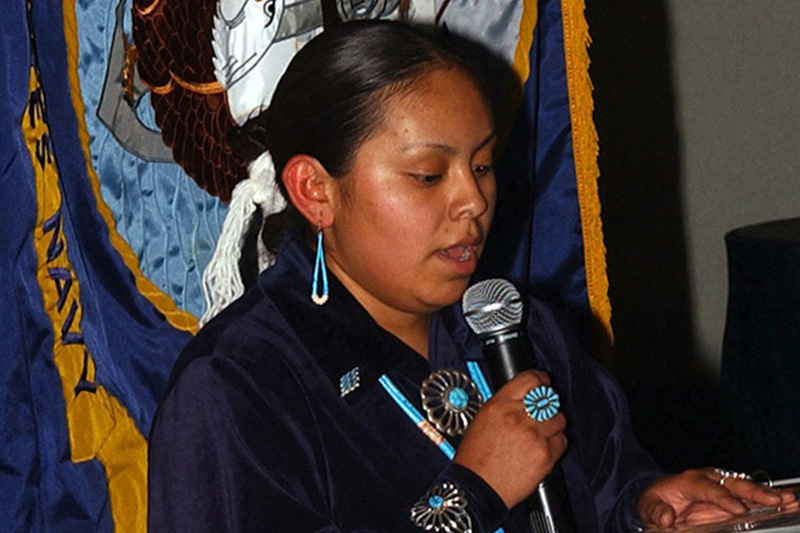
U.S. Navy Seaman Apprentice Andrea Barney says a Navajo prayer to start off a Native American and Alaskan Native Heritage Month celebration aboard the USS Harry S. Truman, November 2004. Naval History and Heritage Command photo
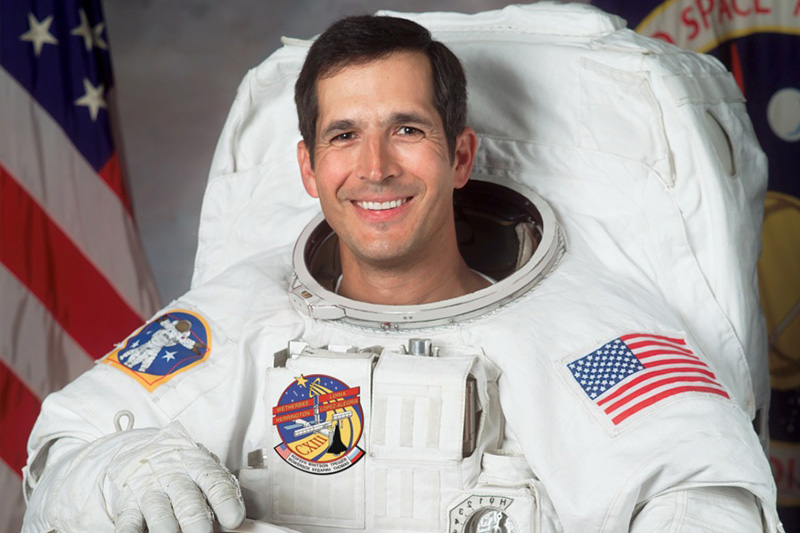
After over a decade as a Navy pilot, John Herrington, a member of the Chickasaw Nation, became the first American Indian astronaut, flying aboard the space shuttle Endeavour on the STS-113 mission in late 2002. NASA photo
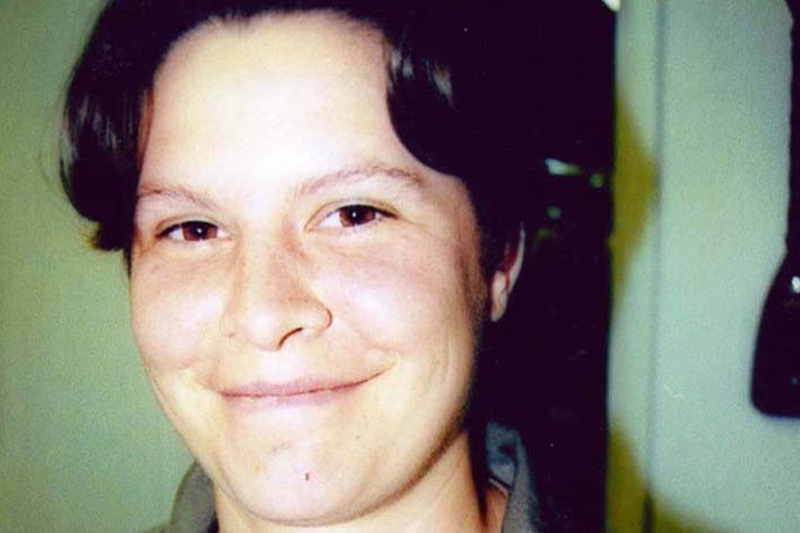
Naval test parachutist Misty D. Warren, a Choctaw, attended Basic Airborne School at Fort Benning in October 1998 and earned her Basic Parachutist Jump Wings. NASA selected Warren to test equipment fitted for female astronauts. Naval History and Heritage Command photo
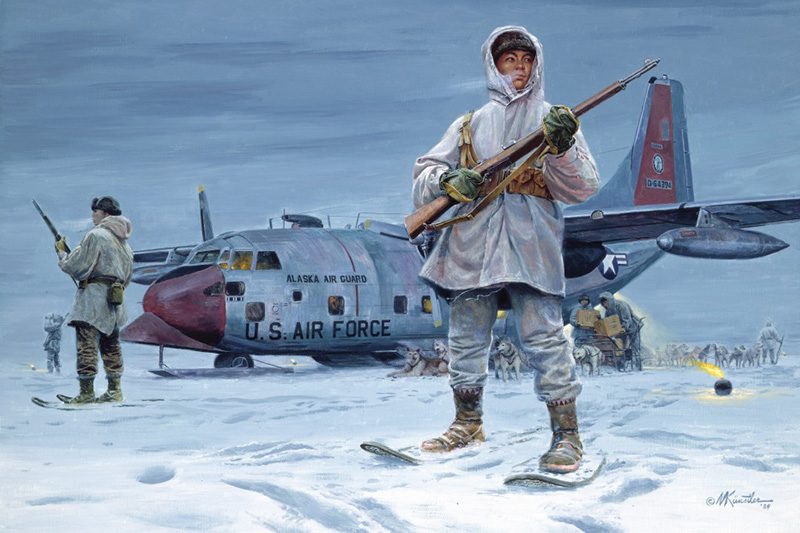
A painting shows members of the Scout Battalions of the 297th Infantry Regiment, Alaska National Guard. Composed primarily of Native Alaskan service members, the battalions were formed during World War II to patrol northern and western Alaska, especially the Bering Sea coastline to provide early warning of enemy activities. Painting by Mort Kunstler for the National Guard Heritage Paintings series
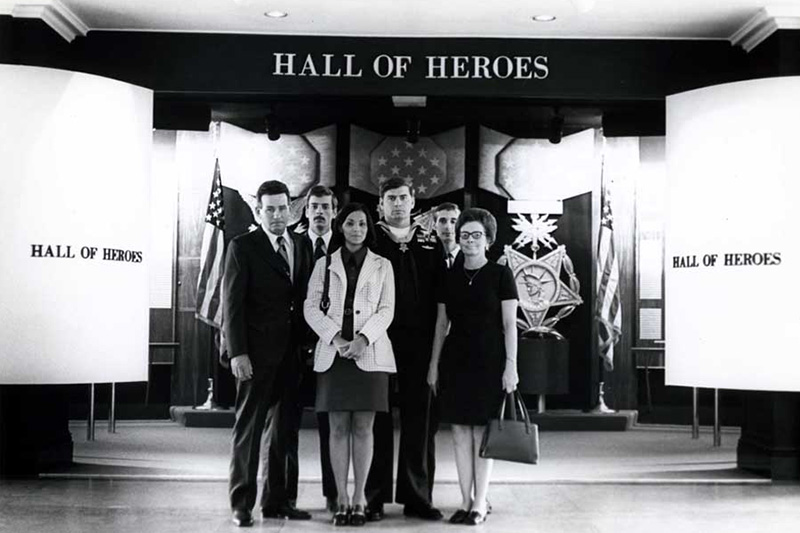
Navy Petty Officer 1st class Michael E. Thornton takes a photo with family and friends at the Pentagon Hall of Heroes after receiving the Medal of Honor from President Nixon on Oct. 15, 1973. Thornton, a member of the South Carolina Cherokee and a Navy SEAL, was cited for rescuing Navy Lt. Thomas Norris during a raid on enemy positions in October 1972. More than 42,000 Native Americans served in the military during the Vietnam war, with more than 90 percent volunteers. Naval History and Heritage Command photo
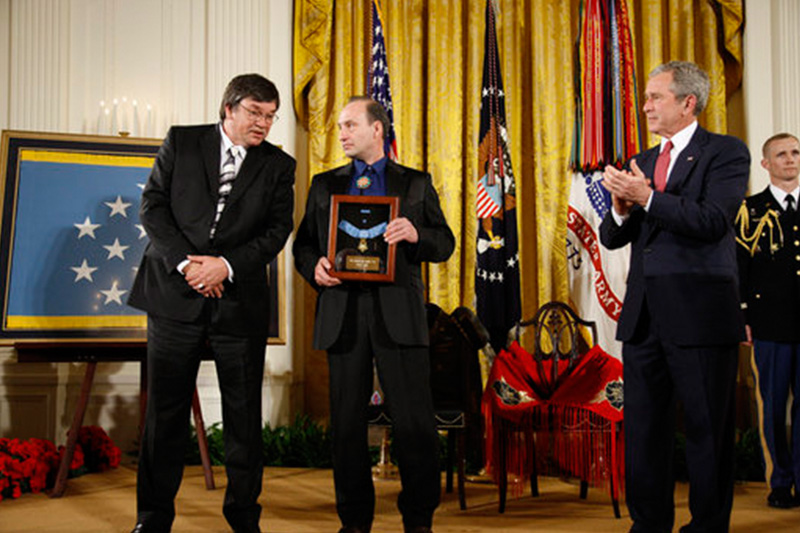
Air Force Master Sgt. Woodrow W. Keeble’s stepson Russell Hawkins accepts the Medal of Honor from President George W. Bush at the White House, March 3, 2008. Keeble was the first full member of the Dakota tribe to receive the Medal of Honor. White House photo
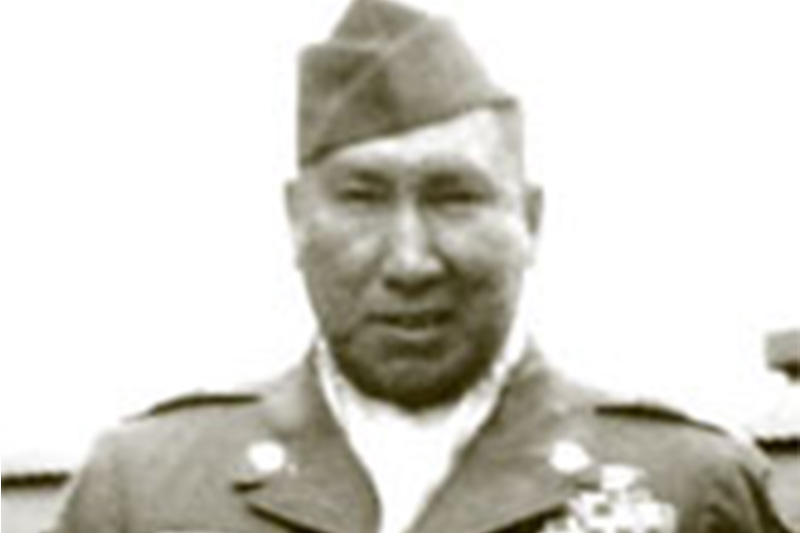
Army Master Sgt. Woodrow W. Keeble, a member of the Dakota people, was a highly decorated combat veteran of World War II and the Korean War. In 2008, he was posthumously awarded the Medal of Honor for acts of gallantry and intrepidity above and beyond the call of duty in action with an armed enemy near Sangsan-ni, Korea, on Oct. 20, 1951.' U.S. Army photo
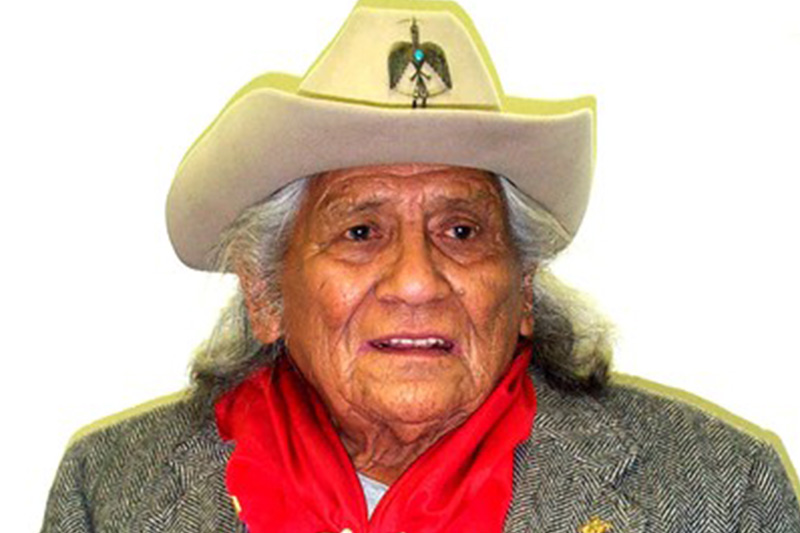
Charles Chibitty, the last surviving World War II Comanche code talker, visits the Pentagon, Nov. 5, 2002.
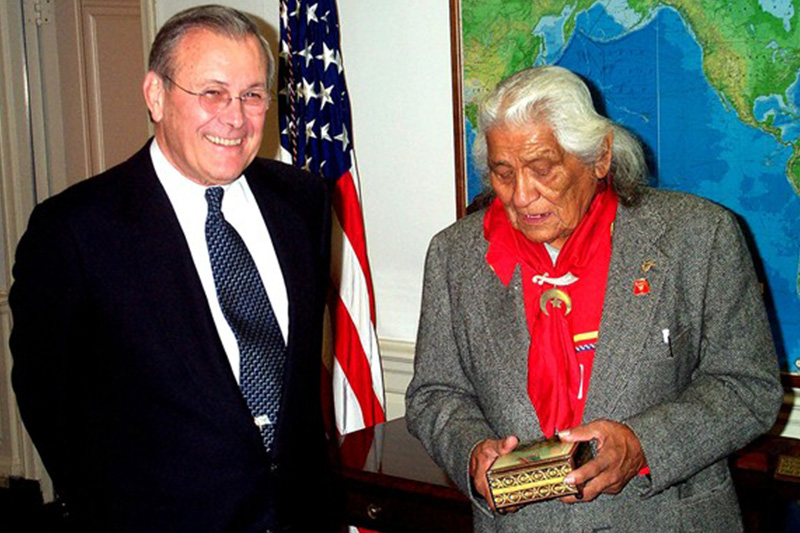
Charles Chibitty, the last surviving Comanche code talker from World War II, meets with then Defense Secretary Donald Rumsfeld at the Pentagon, Nov. 5, 2002. Along with the more famous Navajo code talkers in the Navy and Marine Corps during the World War II, the Army relied on soldiers from many Native groups to send coded messages during both World Wars. DoD photo by Rudi Williams
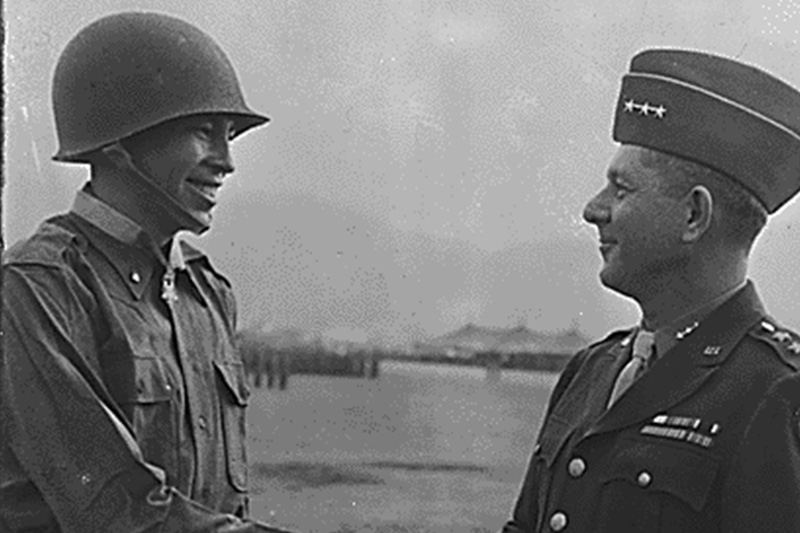
Army Lt. Ernest Childers, a Creek from the 45th “Thunderbird” Infantry Division, shakes hands with then-Lt. Gen. Jacob Devers after receiving the Medal of Honor in Italy for wiping out two machine gun nests, July 1944. Formed primarily from units of the Oklahoma National Guard, the 45th had a number of Native American soldiers. Two other Native Americans from the 45th, Army Lts. Jack Montgomery, Cherokee, and Van Barfoot, Choctaw, were also awarded the Medal of Honor in World War II. National Archives photo

Army Lt. Woody J. Cochran, a bomber pilot, holds a Japanese flag in New Guinea, 1943. A Cherokee from Oklahoma, Cochran earned the Silver Star, Purple Heart, Distinguished Flying Cross and Air Medal. National Archives photo
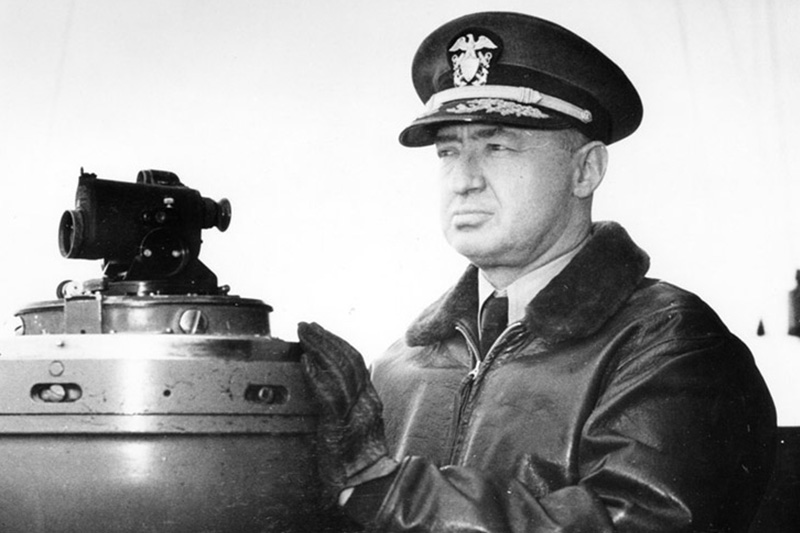
Navy Adm. Joseph J. Clark, a member of the Cherokee Nation, became the first Native graduate of the U.S. Naval Academy in 1917. An aviator, Clark commanded aircraft carriers during the World War II and the Korean War, rising to command the 7th Fleet from 1952 to 1953. The frigate USS Clark was named in his honor. National Archives and Navy History and Heritage Command photo

Choctaw soldiers pose for a photograph in 1918. During the World War I, units in the 36th Infantry division used Choctaw soldiers, and a code based on their language, to send messages in combat. U.S. Army photo
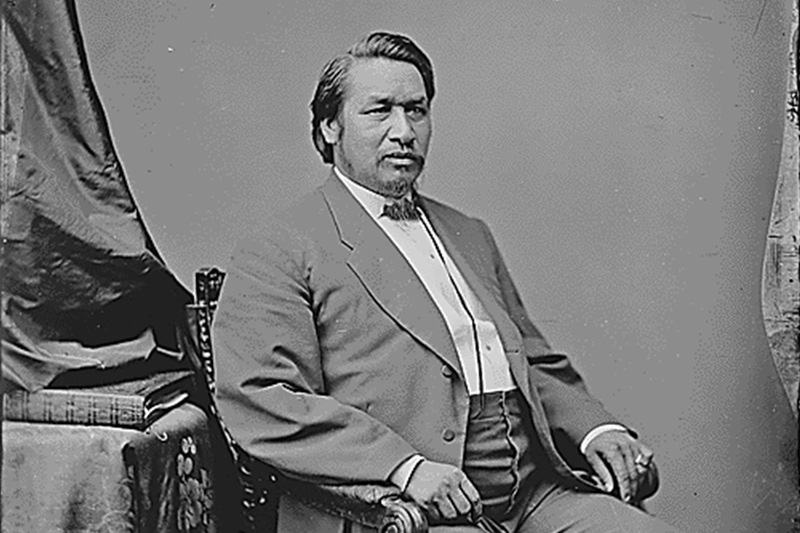
A portrait of Ely S. Parker, member of the Seneca Nation, and a civil engineer. Initially barred from working as a military engineer in the Civil War due to his ethnicity, he later joined the staff of his friend Ulysses S. Grant, rising to the rank of brevet brigadier general. Working as Grant’s adjutant, Parker drafted the surrender documents signed at Appomattox. After the war, Park served as the first Native American Commissioner of Indian Affairs. National Archives photo